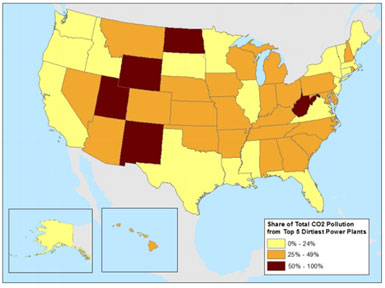After dropping 12% between 2007-2012, US carbon emissions are rising again. In fact, in 2012, we wrote that US emissions were down more than any other country.
During this time, the US has chosen to dramatically expand oil drilling to the highest levels in decades, and we all know about the fracking boom. While greater use of natural gas may help reduce carbon emissions (if you don’t count the methane!) that would otherwise come from coal, as prices fluctuated utilities have used more coal since 2012.
Here are the results: As of June 30th, carbon emissions from fossil fuels are up 2.74% this year compared to same periods in 2013 and 2012 (up 5.96%), according to the US Energy Information Agency.
Energy-related carbon emissions – which account for about 98% of our total – declined from 2010-2012.
But that’s going by the wayside even though we used consumed less energy last year than in 1999.
Power plants are still the main source of US emissions – our 1,550 power plants are responsible for 32% of greenhouse gases.
Emissions have grown the most in the residential sector since 2012 at 16.73%, followed by the commercial sector at 10.27%. They are up 6.89% and 3.18% for utility and industrial sectors respectively and have remained flat in the transportation sector.
For the first half of 2014, carbon emissions from coal consumption are 12.32% higher than they were during the
first half of 2012, and are 7.31% higher from natural gas and 0.81% higher from oil.
At the same time, renewable energy production rose by 3.83% compared to the first half of 2013, and by 7.35% in the same period of 2012. Including hydropower, renewable energy now provides 11.68% of our domestic
energy production.
"The growth in US carbon emissions is a clear
wake-up call that much more needs to be done to accelerate the growth of
renewable energy sources, as well as improved energy efficiency, if the nation
is to successfully address climate change," concludes Ken Bossong,
executive director of the SUN DAY Campaign.
The hidden problem is that the natural gas boom has set off a simultaneous tidal wave of construction of refineries, fertilizer and chemical plants. Some 90 permits have been awarded that together will release greenhouse gases equal to 20 large coal-fired power plants, according to the Environmental Integrity Project. And it’s only going to get worse if we stoke the industry even more by exporting natural gas.
Emissions From Old Coal Plants Responsible
Even though many coal plants have closed and will close with more announcements each month, there are still enough old, inefficient plants to significantly raise emissions. Incredibly, the 50 dirtiest coal plants – less than 1% of all our power plants – produced 12% of US emissions in 2012, and only 15% of our electricity, according to the report, "America’s Dirtiest Power Plants: Polluter on a Global Scale," by Environment America Research & Policy Center and Frontier Group. And they produced 6% of world greenhouse gases, more than Canada and Latin America combined in 2012.
Clearly, regulations on these plants are necessary and EPA’s new rules can’t come soon enough.
In Five States, the Five Dirtiest Power Plants Produce at Least Half of Economy-Wide Carbon Emissions:

Read our article, More Proof We CAN Get Emissions Down Fast.
Read the report:
